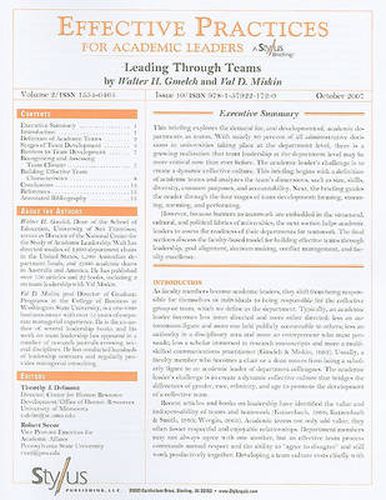Readings Newsletter
Become a Readings Member to make your shopping experience even easier.
Sign in or sign up for free!
You’re not far away from qualifying for FREE standard shipping within Australia
You’ve qualified for FREE standard shipping within Australia
The cart is loading…






Executive Summary This briefing explores the demand for, and development of, academic departments as teams. With nearly 80 percent of all administrative decisions in universities taking place at the department level, there is a growing realization that team leadership at the department level may be more critical now than ever before. The academic leader’s challenge is to create a dynamic collective culture. This briefing begins with a definition of academic teams and analyzes the team’s dimensions, such as size, skills, diversity, common purposes, and accountability. Next, the briefing guides the reader through the four stages of team development: forming, storming, norming, and performing.
However, because barriers to teamwork are embedded in the structural, cultural, and political fabrics of universities, the next section helps academic leaders to assess the readiness of their departments for teamwork. The final sections discuss the faculty-based model for building effective teams through leadership, goal alignment, decision-making, conflict management, and faculty excellence.
$9.00 standard shipping within Australia
FREE standard shipping within Australia for orders over $100.00
Express & International shipping calculated at checkout
Executive Summary This briefing explores the demand for, and development of, academic departments as teams. With nearly 80 percent of all administrative decisions in universities taking place at the department level, there is a growing realization that team leadership at the department level may be more critical now than ever before. The academic leader’s challenge is to create a dynamic collective culture. This briefing begins with a definition of academic teams and analyzes the team’s dimensions, such as size, skills, diversity, common purposes, and accountability. Next, the briefing guides the reader through the four stages of team development: forming, storming, norming, and performing.
However, because barriers to teamwork are embedded in the structural, cultural, and political fabrics of universities, the next section helps academic leaders to assess the readiness of their departments for teamwork. The final sections discuss the faculty-based model for building effective teams through leadership, goal alignment, decision-making, conflict management, and faculty excellence.